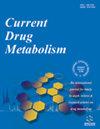Pharmacokinetics, Mass Balance, Tissue Distribution and Metabolism of [14C]101BHG-D01, a Novel Muscarinic Receptor Antagonist, in Rats
IF 2.1
4区 医学
Q4 BIOCHEMISTRY & MOLECULAR BIOLOGY
引用次数: 0
Abstract
Background:: 101BHG-D01, a novel long-acting and selective muscarinic receptor antagonist for the treatment of chronic obstructive pulmonary disease (COPD), is undergoing Phase Ib clinical trial in patients and has shown its potential efficacy. Its preparation method and medical use thereof have been patented in the United States (Patent No.US9751875B2). Objective:: In this study, the pharmacokinetics, mass balance, tissue distribution and metabolism of radioactive 101BHG-D01 were investigated in rats after an intravenous dose of 1 mg/kg [14C]101BHG-D01 (100 μCi/kg). objective: In this study, the pharmacokinetics, mass balance, tissue distribution and metabolism of radioactive 101BHG-D01 were investigated in rats after an intravenous dose of 1 mg/kg [14C]101BHG-D01 (100 µCi/kg). Methods:: Radioactivity in rat plasma, urine, feces, and tissues was measured by liquid scintillation counting (LSC), and metabolite profiling and identification were conducted by UHPLC-β-RAM and UHPLC-Q-Exactive Plus MS. Results:: The total radioactivity of the study drug in rat plasma rapidly declined with an average terminal elimination half-life of 0.35 h. The radioactivity in most tissues reached the maximum concentration at 0.25 h post-- dosing. The radioactivity is mainly concentrated in the kidney and pancreas. The drug-related substances tended to be distributed into the blood cells in the circulation. At 168 h post dosing, the mean recovery of the total radioactivity in urine and feces was 78.82%. Fecal excretion was the major excretion route, accounting for approximately 61% of the radioactive dose. The study drug was metabolized extensively, and a total of 17 metabolites were identified in rat plasma, urine, and feces. The major metabolic pathways involved oxidation, oxidation and dehydrogenation, and O-dephenylation. result: The total radioactivity of the study drug in rat plasma rapidly declined with an average terminal elimination half-life of 0.19 h. The radioactivity in most tissues reached the maximum concentration at 0.25 h post dosing. The radioactivity mainly concentrated in the kidney and pancreas. The drug-related substances tended to be distributed into the blood cells in the circulation. At 168 h post dosing, the mean recovery of the total radioactivity in urine and feces was 78.82%. Fecal excretion was the major excretion route, accounting for approximately 61% of the radioactive dose. The study drug was metabolized extensively and a total of 17 metabolites were identified in rat plasma, urine, and feces. The major metabolic pathways involved oxidation, oxidation and dehydrogenation, and O-dephenylation. There was no significant sex difference in the distribution, metabolism and excretion of [14C]101BHG-D01. Conclusion:: In conclusion, the study results are useful for better understanding the pharmacokinetic profiles of 101BHG-D01 and provide a robust foundation for subsequent clinical studies.新型毒蕈碱受体拮抗剂 [14C]101BHG-D01 在大鼠体内的药代动力学、质量平衡、组织分布和代谢情况
背景::101BHG-D01 是一种用于治疗慢性阻塞性肺病(COPD)的新型长效和选择性毒蕈碱受体拮抗剂,目前正在对患者进行 Ib 期临床试验,并已显示出其潜在的疗效。其制备方法和医疗用途已获得美国专利(专利号:US9751875B2)。研究目的在本研究中,研究了大鼠静脉注射 1 mg/kg [14C]101BHG-D01 (100 μCi/kg)后放射性 101BHG-D01 的药代动力学、质量平衡、组织分布和新陈代谢。 目的::本研究调查了大鼠静脉注射 1 mg/kg [14C]101BHG-D01 (100 μCi/kg)后放射性 101BHG-D01 的药代动力学、质量平衡、组织分布和代谢情况。方法::采用液体闪烁计数法(LSC)测量大鼠血浆、尿液、粪便和组织中的放射性,并采用 UHPLC-β-RAM 和 UHPLC-Q-Exactive Plus MS 对代谢物进行分析和鉴定。结果研究药物在大鼠血浆中的总放射性迅速下降,平均终末消除半衰期为 0.35 h。放射性主要集中在肾脏和胰腺。在血液循环中,药物相关物质倾向于分布到血细胞中。服药后 168 小时,尿液和粪便中总放射性的平均回收率为 78.82%。粪便排泄是主要的排泄途径,约占放射性剂量的 61%。研究药物被广泛代谢,在大鼠血浆、尿液和粪便中总共发现了 17 种代谢物。主要代谢途径包括氧化、氧化和脱氢以及 O-脱苯:研究药物在大鼠血浆中的总放射性迅速下降,平均终末消除半衰期为 0.19 小时。放射性主要集中在肾脏和胰腺。与药物有关的物质倾向于分布到血液循环中的血细胞中。服药后 168 小时,尿液和粪便中总放射性的平均回收率为 78.82%。粪便排泄是主要的排泄途径,约占放射性剂量的 61%。研究药物被广泛代谢,在大鼠血浆、尿液和粪便中共鉴定出 17 种代谢物。主要代谢途径包括氧化、氧化和脱氢以及 O-脱苯。14C]101BHG-D01 的分布、代谢和排泄没有明显的性别差异。结论总之,研究结果有助于更好地了解 101BHG-D01 的药代动力学特征,并为后续临床研究奠定坚实的基础。
本文章由计算机程序翻译,如有差异,请以英文原文为准。
求助全文
约1分钟内获得全文
求助全文
来源期刊

Current drug metabolism
医学-生化与分子生物学
CiteScore
4.30
自引率
4.30%
发文量
81
审稿时长
4-8 weeks
期刊介绍:
Current Drug Metabolism aims to cover all the latest and outstanding developments in drug metabolism, pharmacokinetics, and drug disposition. The journal serves as an international forum for the publication of full-length/mini review, research articles and guest edited issues in drug metabolism. Current Drug Metabolism is an essential journal for academic, clinical, government and pharmaceutical scientists who wish to be kept informed and up-to-date with the most important developments. The journal covers the following general topic areas: pharmaceutics, pharmacokinetics, toxicology, and most importantly drug metabolism.
More specifically, in vitro and in vivo drug metabolism of phase I and phase II enzymes or metabolic pathways; drug-drug interactions and enzyme kinetics; pharmacokinetics, pharmacokinetic-pharmacodynamic modeling, and toxicokinetics; interspecies differences in metabolism or pharmacokinetics, species scaling and extrapolations; drug transporters; target organ toxicity and interindividual variability in drug exposure-response; extrahepatic metabolism; bioactivation, reactive metabolites, and developments for the identification of drug metabolites. Preclinical and clinical reviews describing the drug metabolism and pharmacokinetics of marketed drugs or drug classes.
 求助内容:
求助内容: 应助结果提醒方式:
应助结果提醒方式:


